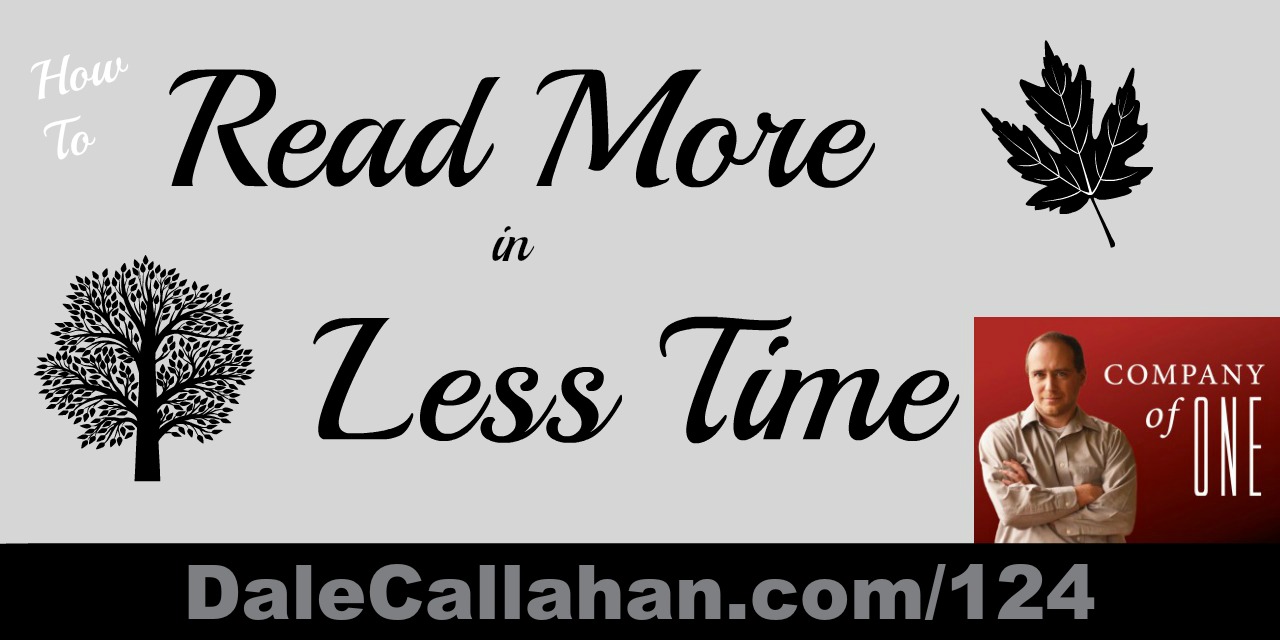[powerpress]
Have a stack of “to be read” books and magazines lying around? (My son, Daniel, labels his “to be read” TBR.) Want to get those reports at work read faster? A few years ago I got into reading faster. I will not call it speed reading because that conjures up images of those weird speed reading exercises when I was in grade school and I start to hyperventilate. (Have I mentioned – I HATED school?) My method has been more of a speed skim, but it worked for me. Yet, the other day I came across a speed reading course online and bought it. I have found it easy to do and very useful – so I wanted to share at least some of what I have learned.
“You can easily read 1 book a week in 2018 with a speed process. Challenge? #52in18”]
The course …Speed Reading Foundation Course by Iris. Yes – I am an affiliate, but for a few bucks I found it to be awesome. (It is on sale for $99).
The course covers all kinds of strategies for reading non-fiction, magazines, newspapers, email, blogs, and even fiction – which is one I had not seen before.
I have spent between 15 to 30 minutes a day in this course for about a week or so, and I can only say that I wish I had bought it sooner.
While the course might really increase my speed (yes I really think it will – and likely already has), the real magic is in the process.
So here I wanted to share with you the key ideas behind increasing your speed (and comprehension) and how to deal with non-fiction books.
Grab a book from the top of your stack and join me!
Main Principles to Increase Reading Speed
1. Use finger or pencil as a guide and move 3 words at a time.
Our eyes tend to follow motion, so our hand or a pen moving along will draw our eyes forward. I do see why this method works because I find it is easier to get into a rhythm with my hand than without.
Then note that you can actually see groups of words instead of one word. If you do not buy this, think about road signs. We glance and know what they say. Perhaps this is a little about context – but the next process I will show you will help to put all reading into context.
For your typical non-fiction book, this will mean about 3 “hops” per line. This might seem awkward at first – but if you practice this about 15 minutes per day it will become natural. Really – it does work!!!
2. Stop regressing
Much of the time you spend reading is going back to something you think you missed. This is called regressing.
So instead, move on. Again, this takes practice to develop trust.. Much of our going back is a waste since we will pick up the context later.
We have to remember that in almost all reading it is not each word we need to get, but the scope and context.
One reason for this is that most written words are wasted and could have been cut out in the first place without a loss in meaning.
3. Stop saying the words in your head
If you say or lip read every word – you will never get faster. Your mind moves faster than your lips, so shut your mouth and try it.
But even then, you will “think” every word, which is called subvocalizing, it will slow you down. I still have not broken that habit – but I can see this is a key to speed.
4. Practice
The Speed Reading Foundation Course by Iris suggests spending 15 minutes a day practicing. Not bad – certainly fits into my 15-minute rule.
But to make it even easier, they have a really handy tool called accelareader which allows you to control the timing of words on the screen.
The typical person reads 150-250 words per minute (wpm). First start and test where you feel comfortable – and that is your reading speed. (yes – it does vary ).
So in your 15 minutes per day, try increasing the speed. I read about 300 wpm, therefore I am practicing at 400 wpm.
It will seem awkward at first but stick with it. This is not so much about comprehension at this point – but learning to see the words. Once you can do that, you will comprehend more.
The Multiple Read Process – The Way to Blow Through Non-Fiction Books
OK, you have a book you want to read and understand. Using the above techniques will only get your speed up, but this process will drive your comprehension through the roof.
Combine these approaches and you will be reading more books!
To try this, take a normal book with about 10-20 pages per chapter and focus on one chapter at a time. (Go ahead, pick up that book – I will wait.)
1. Do a Preview
To preview, read the introduction and conclusion of the chapter. This is probably the first and last paragraph.
2. Do an Overview
Now go back and read the headings, the first sentence of each paragraph, and look over any pictures and/or diagrams.
At this point, you know most of what is in the material – even if you go no further.
For many books, you will decide this is all you need.
3. Now Read
Using the process above (3 words at a time with a pen, no regression, and stop saying the words) read the chapter. You should be able to move about 1/3 faster than you normally read since you already know the material and you are just looking for details.
Try it – really. You have 15 minutes to spare – give it a shot now!
Slay the Speed Reading Naysayers
I know what you are thinking, people will say you never really read the book.
They also say
- Speed reading does not work.
- You are not really comprehending. (at first you might not comprehend as much – but gee, at least you have reviewed the book. They are still waiting to get to it!)
- It does not work for them (they are lazy and refuse to learn – just laugh at them)
- They like to enjoy the books. (So – you enjoy more books.)
But, test yourself. Try it and then talk to other people about it. I bet you will know as much as them about the material.
Are You Up for a Reading Challenge?
Last year I set a 1 book per week goal. Did not make it. So I am going to use my newly refined skills to hit 52 books in 2017.
Are you up for the challenge? If so let me know on Facebook or Twitter with hashtag #52in17.
Links mentioned in this episode:
Speed Reading Foundation Course by Iris
Podcast Details:
Click Here to Subscribe via RSS (non-iTunes feed)
Subscribing is simple!
- Go to iTunes.
- Click Open In iTunes
- Hit subscribe!
While there why not leave me a review!
Stitcher
If you are a Stitcher listener, I have not left you out! Just click Company of One on Stitcher!






0 Comments